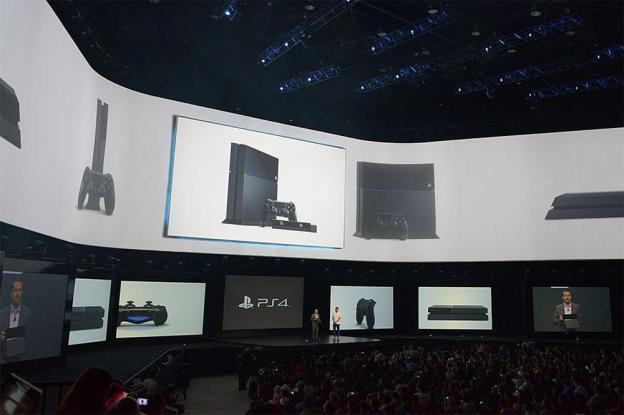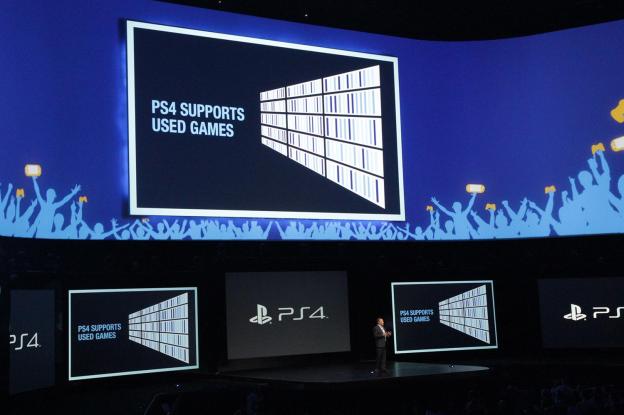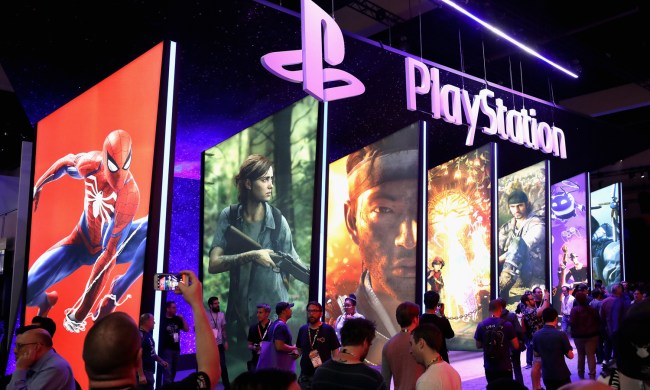
Day zero of E3 2013 is over, and there’s really no contest: Sony stepped up and delivered on every possible angle. The games look stunning, the tech promises great things, the current-gen support continues to cruise along, and – most vitally – the all-important questions surrounding used games, always-on requirements, and price point have been answered.
Microsoft should be very, very worried. “Greatness awaits” indeed.
Sony delivered a monster opening salvo in February 2013 with its revealing PlayStation Meeting. While gamers joked about the absent physical hardware, the company’s commitment to both games and an expanded slate of social features in the next-gen was immediately clear. The revelations of the 2013 Game Developer’s Conference outed an unprecedented commitment to working with and growing independent developers in the Indie Pub Fund.
Then came the Xbox One. Questions that were casually dismissed as topics for later discussion by Sony were muddled by conflicting accounts at the Microsoft reveal. Would there be an always-on requirement? A fee for purchasing used games? A way to share disc-based content between friends? The answers weren’t just uninformative, they were flat-out conflicting.
Then, just a week before E3, confirmation. Confusing and highly restrictive rules for transferring a game license to a friend. Online checks every 24 hours that threaten to lock you out of your own games. A likely innocuous but nonetheless alarming always-listening Kinect. Pro-corporate, anti-consumer. Backlash ensued, and nothing but silence in response. A morning press conference brought news of games, so very, very many games, but nothing of the rumbles from the increasingly frustrated peanut gallery.

Through all of this, Sony sat silently, lobbing occasional passive-aggressive shots at Microsoft’s plans but saying nothing of its own. Cynics suggested that it was because the PlayStation 4 would be the same. Oh how wrong they were.
You get your used games on the Sony console with no hassle. You can trade them with your friends. They are all yours. The console doesn’t require any online checks to keep it 100 percent functional. Many of the games will no doubt improve or even require online connectivity, but those that don’t won’t carry any requirements.
Then, the price: $399. A full $100 less than the Xbox One. Sony didn’t expressly confirm it, but the Amazon pre-order suggests that the camera comes inside the box alongside the console and the DualShock 4.
Oh yeah, there’s also streaming video and music support straight from Sony as well. No sweeping pronouncements about cable box connectivity, no time spent convincing you that the original programming plans offer just as much value on your gaming console as the games themselves. Just a simple, “Yup. That too. Now let’s talk about games …”
How about those games! Kingdom Hearts III. Final Fantasy XV. Mad Max. The Elder Scrolls Online. NBA 2K14. Assassin’s Creed IV: Black Flag. Watch Dogs. The Walking Dead: 400 Days. Destiny. Any number of highly promising indies. Maybe not all exclusives, but every one of them on Sony‘s big screen, not Microsoft’s. You want guaranteed exclusives? There are those too.
Killzone: Shadow Fall, Drive Club, Infamous: Second Son, and Knack, all of which were revealed at PlayStation Meeting. Then there’s that sexy-looking Sony Santa Monica collaboration with Ready At Dawn, The Order: 1866. Steampunk madness in 19th century London with … werewolves? That sure looked like a pack of werewolves.

Where’s The Last Guardian? Who the hell cares. Fine, plenty of people. Maybe all of the incoming dollars from the massively successful PlayStation 4 will finally birth that long-awaited dream game into being.
It always feels silly and forced to crown a press conference “winner” at E3, but there’s just no contest at all this year. Sony is a dominant force going into the 2013 show, and all signs point to continued dominance on through to the console launch this fall. The pressure is now on Microsoft, to address its army of angered fans and to prove that it can still compete against a less expensive, less restrictive piece of hardware.


